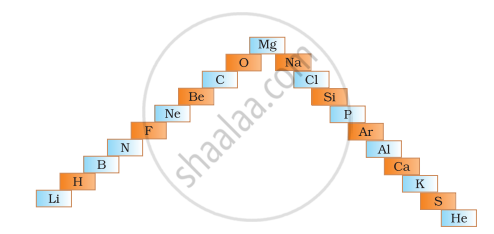Advertisements
Advertisements
Question
Nanometer unit is used to measure atomic radius.
Options
Right
Wrong
Solution
Nanometer unit is used to measure atomic radius- Wrong
APPEARS IN
RELATED QUESTIONS
Answer the following in respect of element `31/15 P`
Give its electronic configuration
Give the trends in atomic size on moving down the group.
Why is the size of neon greater than fluorine?
Fill in the blank:
On moving across a period from right to left in the periodic table, the atomic size of the atom ___________.
Arrange the following in order of increasing radii:
CI- , CI
Write the name and symbol of the element from the description.
The atom having the smallest size.
Write scientific reason.
Atomic radius goes on increasing down a group.
Supply the missing word from those in the brackets:
If an element has seven electrons in its outermost shell then it is likely to have the ______ (largest/ smallest) atomic size among all the elements in the same period.
Moving from left to right, the size of the atom decreases.
The size of an atom depends on the number of valence electrons.
Some elements and their atomic radii are given here. Arrange them in decreasing order of their atomic radii. Identify which of the above elements is the biggest atom and which is smallest?
| Element | K | Na | Rb | Cs | Li |
| Atomic radius (pm) | 231 | 186 | 244 | 262 | 151 |
Write information about the given atomic numbers in the table. 10, 20, 7.
| Atomic Number | Electronic configuration | Group | Period | Element |
| 10 | ||||
| 20 | ||||
| 7 |
Which of the following is the correct order of atomic size?
Elements have been arranged in the following sequence on the basis of their increasing atomic masses.
| F, | Na, | Mg, | Al, | Si, | P, | S, | Cl, | Ar, | K |
- Pick two sets of elements which have similar properties.
- The given sequence represents which law of classification of elements?
An element X (atomic number 17) reacts with an element Y (atomic number 20) to form a divalent halide.
- Where in the periodic table are elements X and Y placed?
- Classify X and Y as metal (s), non-metal (s) or metalloid (s)
- What will be the nature of oxide of element Y? Identify the nature of bonding in the compound formed
- Draw the electron dot structure of the divalent halide
Atomic number of a few elements are given below
10, 20, 7, 14
- Identify the elements
- Identify the Group number of these elements in the Periodic Table
- Identify the Periods of these elements in the Periodic Table
- What would be the electronic configuration for each of these elements?
- Determine the valency of these elements
- In below ladder symbols of elements are jumbled up. Rearrange these symbols of elements in the increasing order of their atomic number in the Periodic Table.
- Arrange them in the order of their group also.

Arrange the following in order of increasing radii:
Cl−, Cl
Explain your choice.
Arrange the following in order of increasing radii:
N, O, P
Explain your choice.
